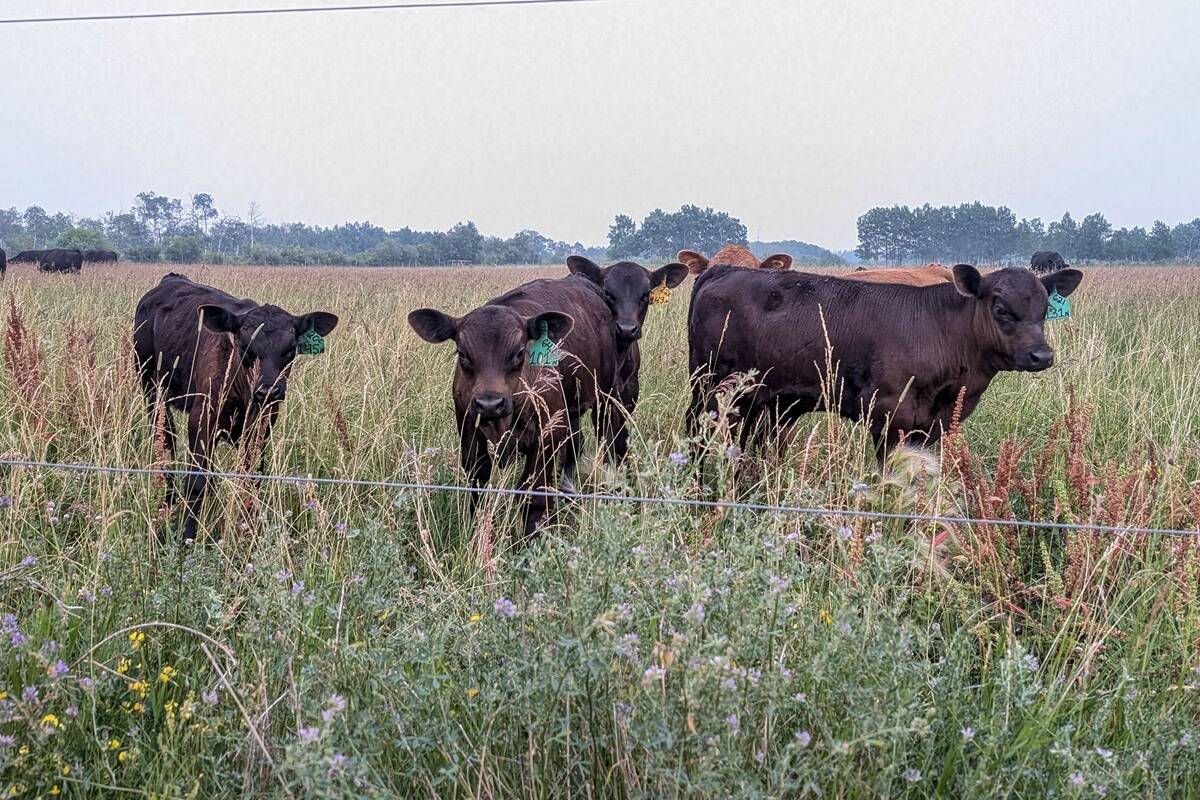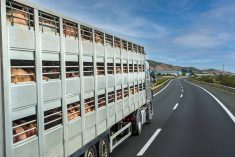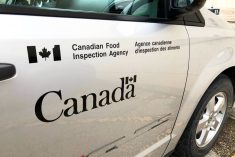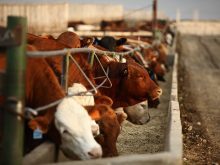Federal inspectors have formally closed the book on a 2018 outbreak of bovine tuberculosis (TB) in a British Columbia cattle herd, but with “no definitive source of infection” found.
The probe dates back to October that year, when a beef cow of an unknown age, from a cow-calf operation in B.C.’s southern Interior, was culled, shipped east and slaughtered at a federally-inspected plant in southern Alberta, on Oct. 24, 25 and 26 respectively.
The Canadian Food Inspection Agency, which routinely takes and tests tissue samples from Canadian beef packing plants for its bovine TB surveillance program, on Nov. 9 confirmed positive results from the B.C. animal.
Read Also

‘Not a happy Trump supporter’: U.S. Cattle ranchers hit by push for lower beef prices
Much like the price of eggs during the Biden administration, the cost of beef has become an emblem of the affordability crisis in Donald Trump’s America. Beef prices hit record highs earlier this year as the cattle herd shrank and consumer demand remained strong.
Ultimately, only that cow, and three other animals from the same B.C. herd, were found to have TB-related lesions, and all were later confirmed through lab cultures to have had the same strain of bovine TB.
In the meantime, the probe saw 23,000 animals in 42 herds also tested for bovine TB — with almost 1,050 of those animals ordered destroyed, CFIA said.
As for where the strain came from, lab culture tests and whole-genome sequencing found the strain isolated from the four TB-positive animals to be “most genetically related” to strains isolated in the U.S. from fed cattle of “Mexican or unknown” origin.
But the specific TB strain in this case is not linked to any previous TB cases in wildlife, humans or livestock in Canada, CFIA added.
Canada’s previous outbreak of bovine TB in domestic cattle, in 2016, also featured a whole other TB strain that also had no link to any previous cases in Canada, including the 2018 case.
Rodeo cattle
Given both of those outbreaks, CFIA said it’s been evaluating “possible entry pathways of bovine TB from outside the country” to see if other preventive measures could help stop “non-domestic” strains from arriving in Canada.
Based on its evaluation, CFIA said it has worked with the U.S. Department of Agriculture to apply “more stringent” testing on U.S.-origin rodeo cattle before they’re imported into Canada, effective May 1 this year.
There’s also been no evidence so far of the 2018 strain spreading to any animals, including wildlife, outside the index herd where the four cases were found. B.C. provincial officials are still running ongoing surveillance of wildlife in the “vicinity” of the index herd.
The index premises had to undergo cleaning and disinfection before it could be restocked. One pasture was “not permitted” for restocking, CFIA added, as the producers chose to keep that pasture fallow for a two-year period, to be completed next year.
Compensation paid out to cover transportation, disposal and destruction of animals totaled $3.78 million, of which about $3.2 million was paid directly to producers, CFIA said in its report, released Aug. 6.
Up to $1 million more was made available through AgriRecovery to help cover “extraordinary costs” incurred where herds were quarantined or ordered destroyed. A portion of eligible costs was covered related to feeding, veterinary expenses, extraordinary handling and cleaning and disinfection on sites where bovine TB was confirmed.
“Given the outcome of the case response, British Columbia continues to be recognized as being free from bovine TB,” as do all other provinces, CFIA said in its report.
“The strength of Canada’s bovine TB program supported uninterrupted international market access for Canadian cattle and meat products during the course of the response and this mitigated any impacts on the overall Canadian cattle sector.”
Data entry
As for lessons learned from the B.C. outbreak, CFIA noted “information management and technology challenges” remain for disease responses. That said, data management was improved using new RFID ear tag readers and centralized data, which “reduced the need for manual data entry and the related costs and potential for errors.”
The beef industry is interested in “further discussions in regard to producer compensation,” CFIA said, including costs not currently covered under federal compensation plans for such outbreaks.
The industry would also like to discuss “potential alternatives to herd destruction for herds with unique genetics,” the agency added.
Producers and industry groups also noted the importance of “effective communications with producers,” CFIA said.
The agency, in its report, acknowledged the “vital role” the province and industry played on that front, including “extremely valuable” ongoing representation from the B.C. Cattlemen’s Association.
It will also help, CFIA said, to have a revised bovine TB hazard-specific plan finalized before the next such outbreak, “to ensure clear direction for incident commanders and field staff.” — Glacier FarmMedia Network















